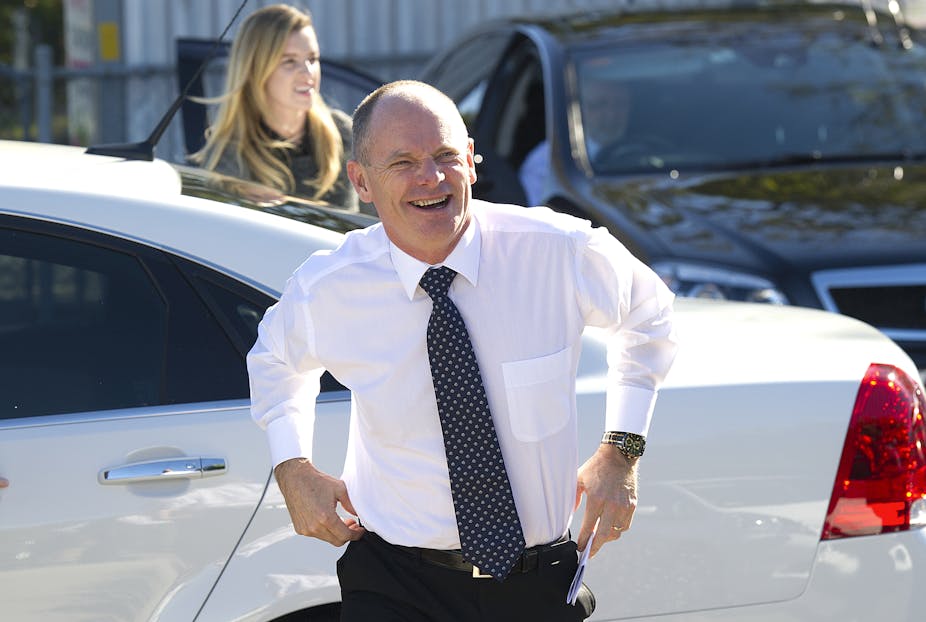The result in Saturday’s Stafford byelection in Queensland was entirely expected. Since the electorate was re-established before the 2001 election, Stafford had remained a safe seat for Labor. That was until its now former member, Chris Davis, won it for the Liberals when the Liberal National Party (LNP) swept into power in 2012.
Last weekend’s result was an electoral realignment to the status quo as Anthony Lynham regained Stafford for the ALP. However, the 18.6% swing against the LNP might trouble some of its party officials.
The Courier Mail newspaper seemed to think that the result suggested the beginning of the end for the Newman government. This was mostly based on the reasonable prediction of Griffith University political scientist Paul Williams, who thought before the election that the swing against the LNP could be as high as 12%.
Others have even suggested that the result in Stafford demonstrates that the LNP might lose government at a general election next year. This ignores the fact that the ALP has only nine parliamentary seats, with Stafford now its safest seat. This makes the ALP’s return to government more complicated than some commentators make it appear.
An example from the recent past would suggest a possible path ahead for the government, and premier Campbell Newman already seems to be travelling down it.
In 2005, the ALP lost the Redcliffe and Chatsworth byelections with substantial swings against Peter Beattie’s government. It won back those seats at the election the following year as part of Beattie’s third and final victory.
The Beattie example is incredibly instructive for Newman. On Monday, in the wake of the Stafford result, Newman channelled Beattie when he apologised for and revised some of the government’s more controversial policies. These included changes to the Crime and Misconduct Commission and anti-bikie laws.

Queensland voters are used to seeing such political dexterity because it became the hallmark of Beattie’s premiership during his tenure. In 2005, Paul Williams critiqued his leadership style, naming it “The Anatomy of the Mea Culpa”:
… [it] is deceptively simple: Beattie anticipates, and then circumvents, media criticism with a pre-emptive admission of wrong-doing, an unambiguous acceptance of personal responsibility and, most effectively, a humble apology delivered most usually at an open press conference.
Moreover, Beattie’s mea culpa is almost always accompanied by a backflip and a commitment to ‘fix’ the problem to prevent its recurrence … Beattie, then, uses both the backflip and the mea culpa as collective strategies that have proven extremely efficient as instruments to defuse emergent crises.
Beattie and the ALP were suffering a lull of popularity in 2005 at the time of the Redcliffe and Chatsworth byelections due to a crisis in the Queensland hospital system. Beattie was able to offset this by telling the public that he would establish a commission of inquiry, that his government would listen to the public, and implement the inquiry’s recommendations. His subsequent election victory vindicated this strategy.
A review of the anti-bikie laws, as flagged by Newman, indicates that he recognises that he faces difficulties at the next election if he does not change his strategy.
However, if Newman wishes to emulate Beattie’s success by adopting the “mea culpa” strategy, it will depend on his ability to capture the public mood. That is something he has struggled to achieve thus far as premier.
When the government launched its “Strong Choices” campaign in April, its focus was on “community consultation”. However, the policy program contained within Strong Choices failed to gain much traction with the wider public. The public might have thought that the government needed to make “strong choices”, but few understood what choices they were.

In essence, Newman needs to sell substantive policy change as well as a change in personal branding if he is to succeed at the next election.
The spectre of Clive Palmer also looms on the horizon. Like Beattie, Palmer’s strength as a politician is his ability to convey simple messages directly to voters. Given Palmer’s toxic relationship with the Queensland LNP, his Palmer United Party (PUP) may pose a greater threat to Liberal seats than the ALP at the next poll.
Recent polling by Galaxy across four seats indicates that PUP might receive 21% of first preferences. However, PUP’s success in Queensland will largely depend on how well Palmer handles the balance of power in the federal Senate between now and the state election.
The above variables all indicate that predicting the outcome of the 2015 Queensland election at this time is immensely difficult. What seems certain is that the Newman government is in a vulnerable position for the first time in its political life.
The Stafford byelection indicates that confidence in Newman and his government is at a low ebb. However, the LNP has time to press its credentials for re-election. The Stafford result may be the turning point for the government, providing the reality check Newman and his colleagues need.

